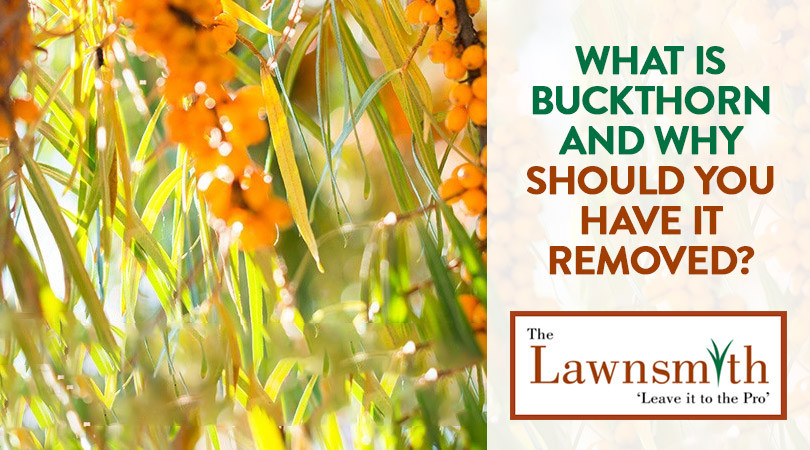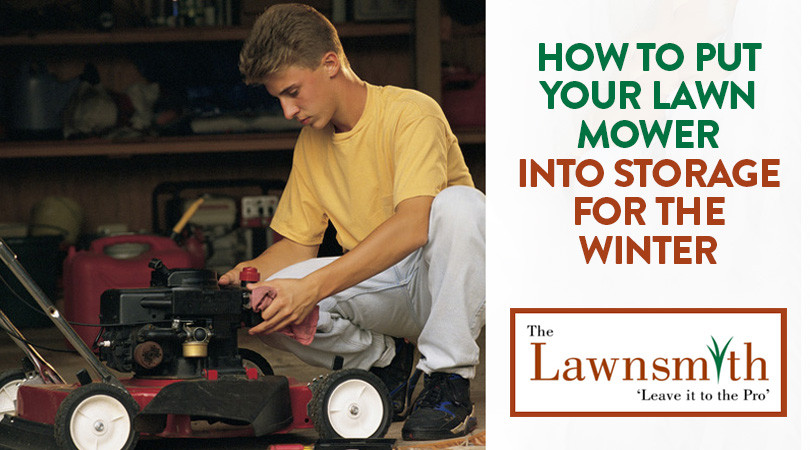What is Buckthorn and Why Should You Have It Removed?

12/28/2016
Common Buckthorn first appeared in Minnesota in the mid-1800s by way of Europe. It was popular as a hedging material, but people soon discovered that it was also quite invasive. Buckthorn was such a problem that the nursery industry here stopped selling it as far back as the 1930s. However, many Buckthorn hedges, trees, and plants remain in older neighborhoods in Minnesota. Yours may even be one of them.
Damage Caused by Invasive Buckthorn
The Minnesota Noxious Weed Law prohibits the sale, transport, and propagation of invasive Buckthorn. Unfortunately, some businesses choose to ignore this law in the interest of profits. It may also still be available for sale in other states. You cannot bring it back to Minnesota or neighboring Wisconsin since it has a noxious weed law as well.
The glossy Buckthorn is especially problematic. The Columnaris comes in a tall and narrow form while the Aspenofolia and the Ron Williams contain narrow leaves that cause them to take on the appearance of a fern. All three types aggressively invade wetlands such as sage meadows, fens, and acidic bogs. Some of the other specific issues caused by Buckthorn include:
Damage Caused by Invasive Buckthorn
The Minnesota Noxious Weed Law prohibits the sale, transport, and propagation of invasive Buckthorn. Unfortunately, some businesses choose to ignore this law in the interest of profits. It may also still be available for sale in other states. You cannot bring it back to Minnesota or neighboring Wisconsin since it has a noxious weed law as well.
The glossy Buckthorn is especially problematic. The Columnaris comes in a tall and narrow form while the Aspenofolia and the Ron Williams contain narrow leaves that cause them to take on the appearance of a fern. All three types aggressively invade wetlands such as sage meadows, fens, and acidic bogs. Some of the other specific issues caused by Buckthorn include:
- Degrades wildlife habitat
- Shades other plants on forest floors and causes problems with erosion
- Forms a layer of vegetation that cannot be penetrated
- Draws nutrients, light, and moisture away from native plants
- Threatens the survival of forests, prairies, wetlands, and other natural habitats
- Acts as a host to pests such as soybean aphid and crown rust fungus
- Grows unchecked because it doesn’t have the natural controls of disease or insects
Click here to see photos of common types of Buckthorn.
We Remove All Types of Invasive Buckthorn
The Lawnsmith is available to identify Buckthorn on your property, remove it, and dispose of it appropriately. This is especially important if you have fruit-bearing Buckthorn trees. You could do it yourself, but the job is time-consuming and labor-intensive. This time of year is busy enough without worrying about unknowingly breaking a state law or the damage causes by this invasive species. We’re here to help, so just give us a call at your convenience to schedule Buckthorn removal.
Photo Credit: rootstocks / Getty Images
How to Put Your Lawn Mower into Storage for the Winter

11/28/2016
Your lawn mower has faithfully seen you through weekly mowing sessions in late spring, summer, and early fall. Now that fall is about to give way to winter, it is time to put it into storage until next spring. However, doing so isn’t as simple as placing it in the garage and forgetting about it for months. After the last mow of the season, you need to take several steps to ensure that you store it safely. Taking an hour or two now will also keep the mower in good working condition until you need to use it again.
Step-by-Step Guide to Preparing Your Push Mower for Storage
Leaving unused gasoline in a lawn mower while it sits in your garage for months is just inviting trouble. Not only is this a fire hazard, it also invites rust and gums up the mower’s carburetor. To remove the fuel, first add stabilizer to the tank and start the mower’s engine. This forces it to distribute the stabilizer throughout the system.
Next, turn your mower off and wait for it to cool. When you’re certain it is cool enough, siphon the remaining gas into a clean can. Start your lawn mower and allow it to run until it stops from the lack of fuel. Repeat this process until the fuel lines are empty and the mower no longer starts. Before proceeding further, disconnect the spark plugs to avoid serious injury. You’re now ready to complete these last steps:
Step-by-Step Guide to Preparing Your Push Mower for Storage
Leaving unused gasoline in a lawn mower while it sits in your garage for months is just inviting trouble. Not only is this a fire hazard, it also invites rust and gums up the mower’s carburetor. To remove the fuel, first add stabilizer to the tank and start the mower’s engine. This forces it to distribute the stabilizer throughout the system.
Next, turn your mower off and wait for it to cool. When you’re certain it is cool enough, siphon the remaining gas into a clean can. Start your lawn mower and allow it to run until it stops from the lack of fuel. Repeat this process until the fuel lines are empty and the mower no longer starts. Before proceeding further, disconnect the spark plugs to avoid serious injury. You’re now ready to complete these last steps:
- Remove the mower blade by unscrewing the bolts holding it in place. Be sure to wear thick gloves to prevent cutting your hands.
- Change the oil if your mower has a 4-cycle engine. With a pan nearby, place a tarp under the mower to catch oil spatter. Placing the mower on its side with its carburetor and oil filter facing up, remove the plug of the oil reservoir. Now you can tilt the mower slowly until its oil starts dripping into the pan. Don’t forget to replace the plug once all the oil has drained.
- Clean the underside of the mower by scraping mud and grass of its deck with a putty knife. This clears its passageways and prevents rust build-up during the winter. You can now re-attach the blade and put fresh oil in the tank. It should be a lighter oil such as SAE-30.
- Change the mower’s air filter or clean if it has a reusable sponge.
- Replace the spark plugs. You may want to consider investing in new ones each season.
The Lawnsmith is Here for You All Four Seasons
Some landscape and lawn care companies shut down for the winter, but not The Lawnsmith. Give us a call if you still need help with fall clean-up or if you’re thinking ahead to snow removal or roof raking services this winter.
Photo Credit: Comstock / Getty Images
Some landscape and lawn care companies shut down for the winter, but not The Lawnsmith. Give us a call if you still need help with fall clean-up or if you’re thinking ahead to snow removal or roof raking services this winter.
Photo Credit: Comstock / Getty Images


